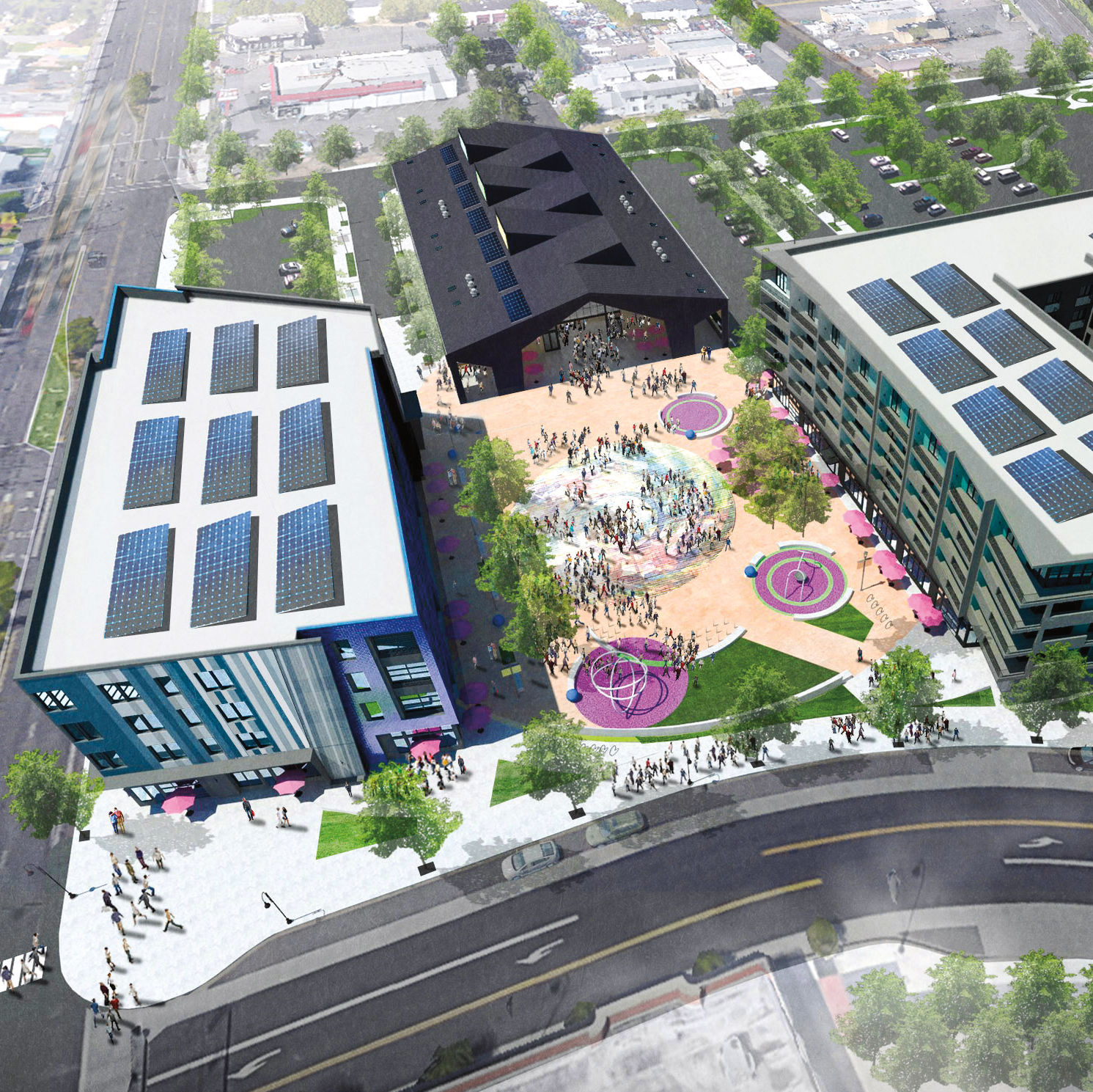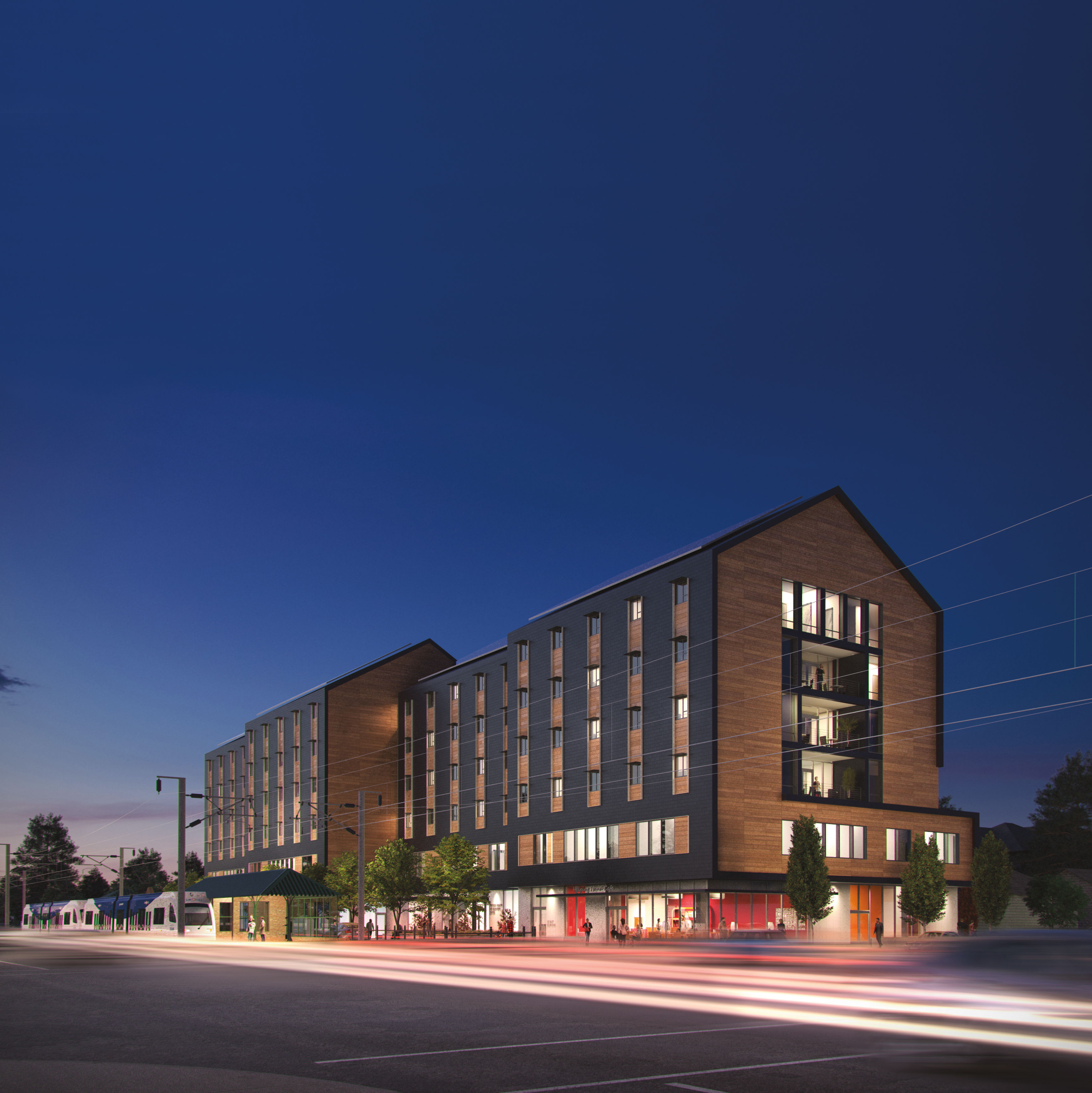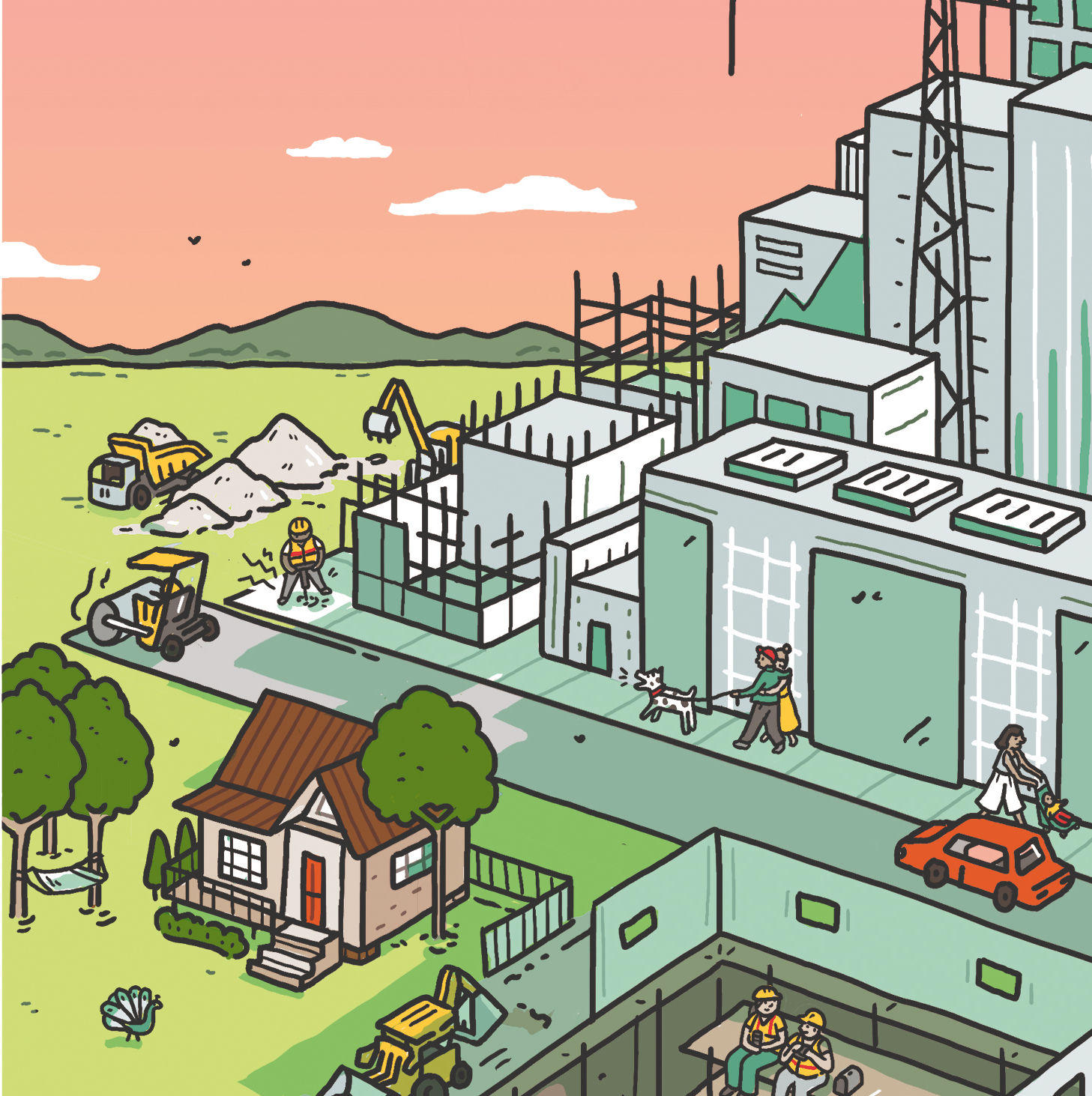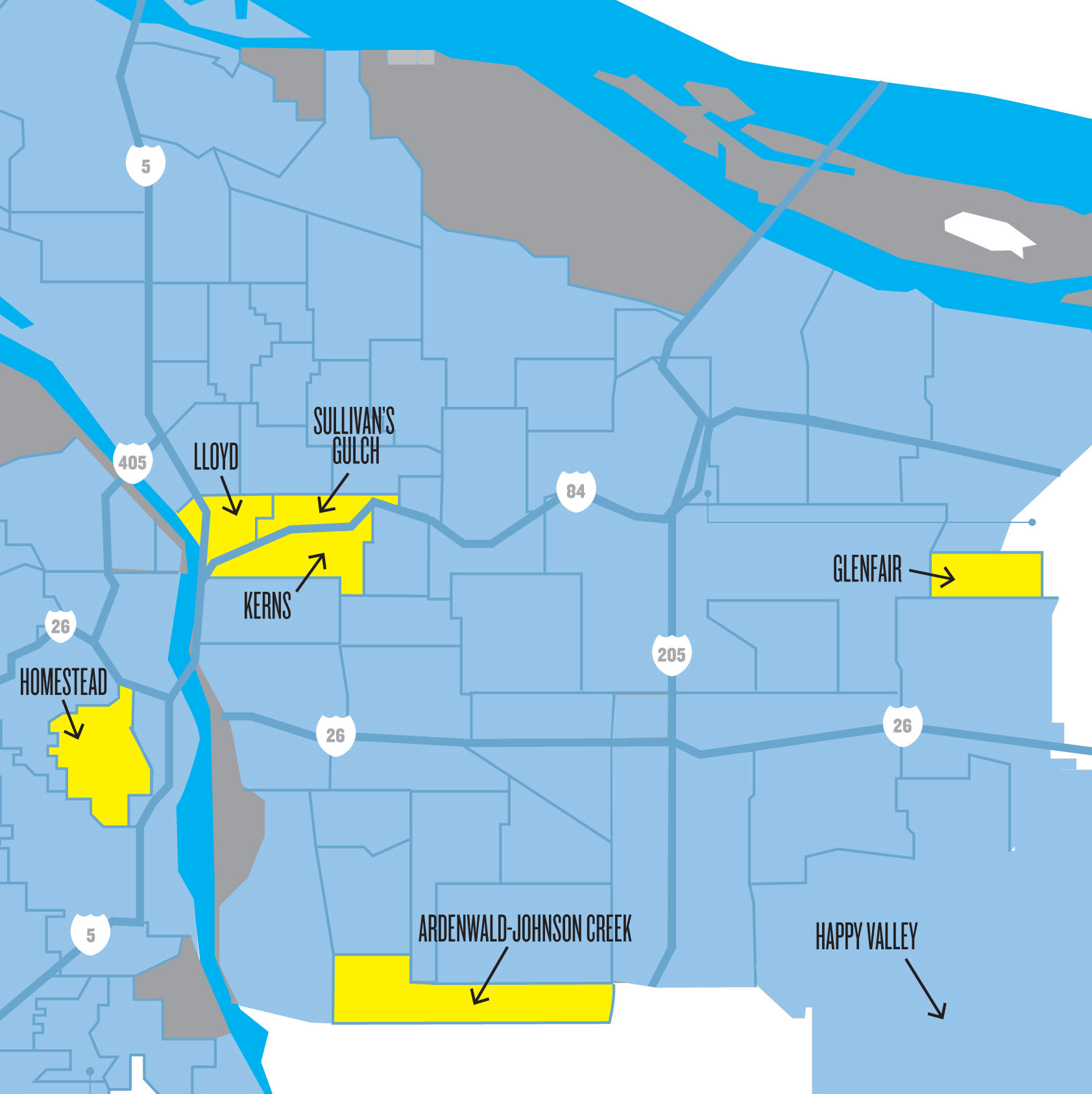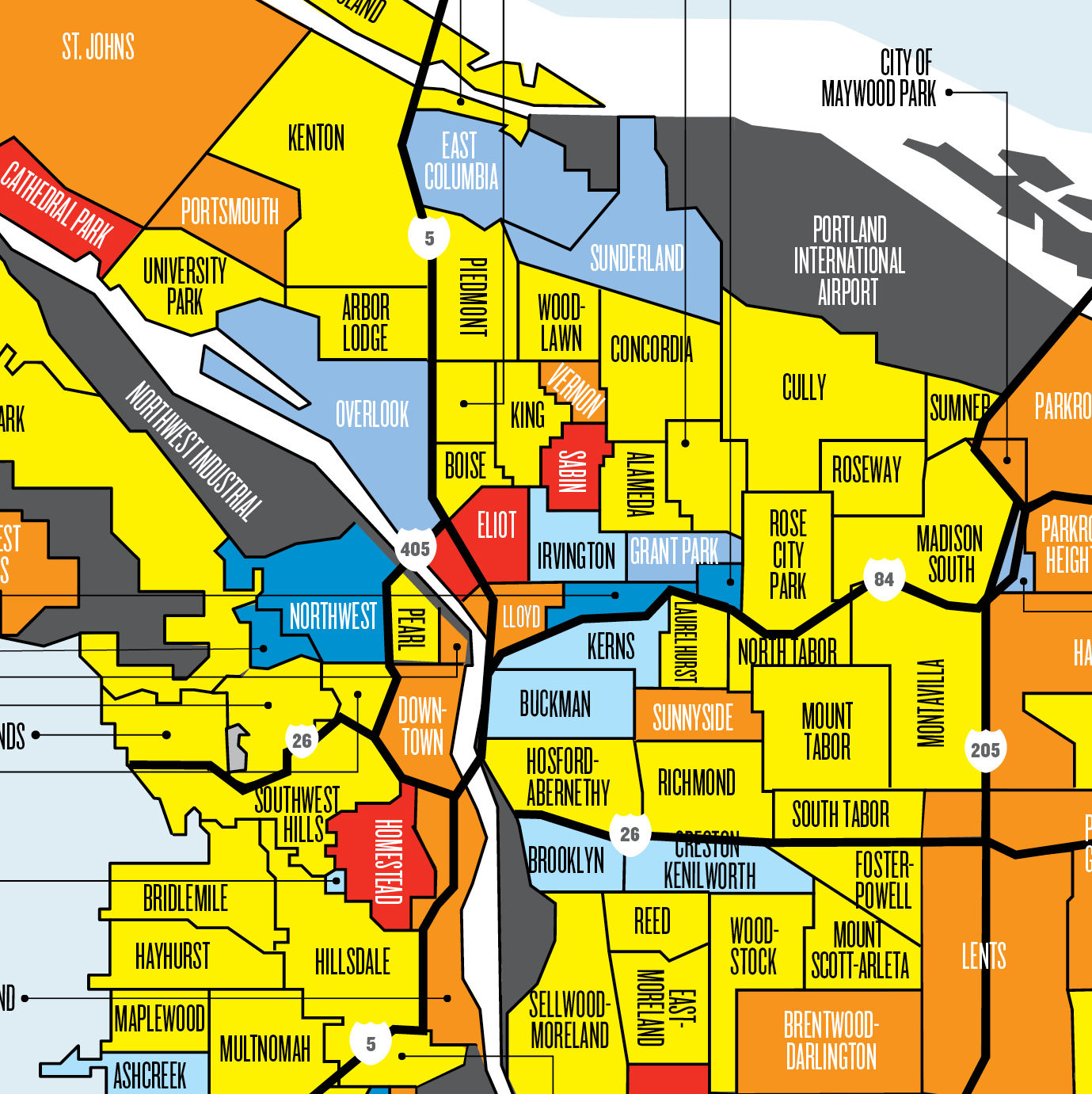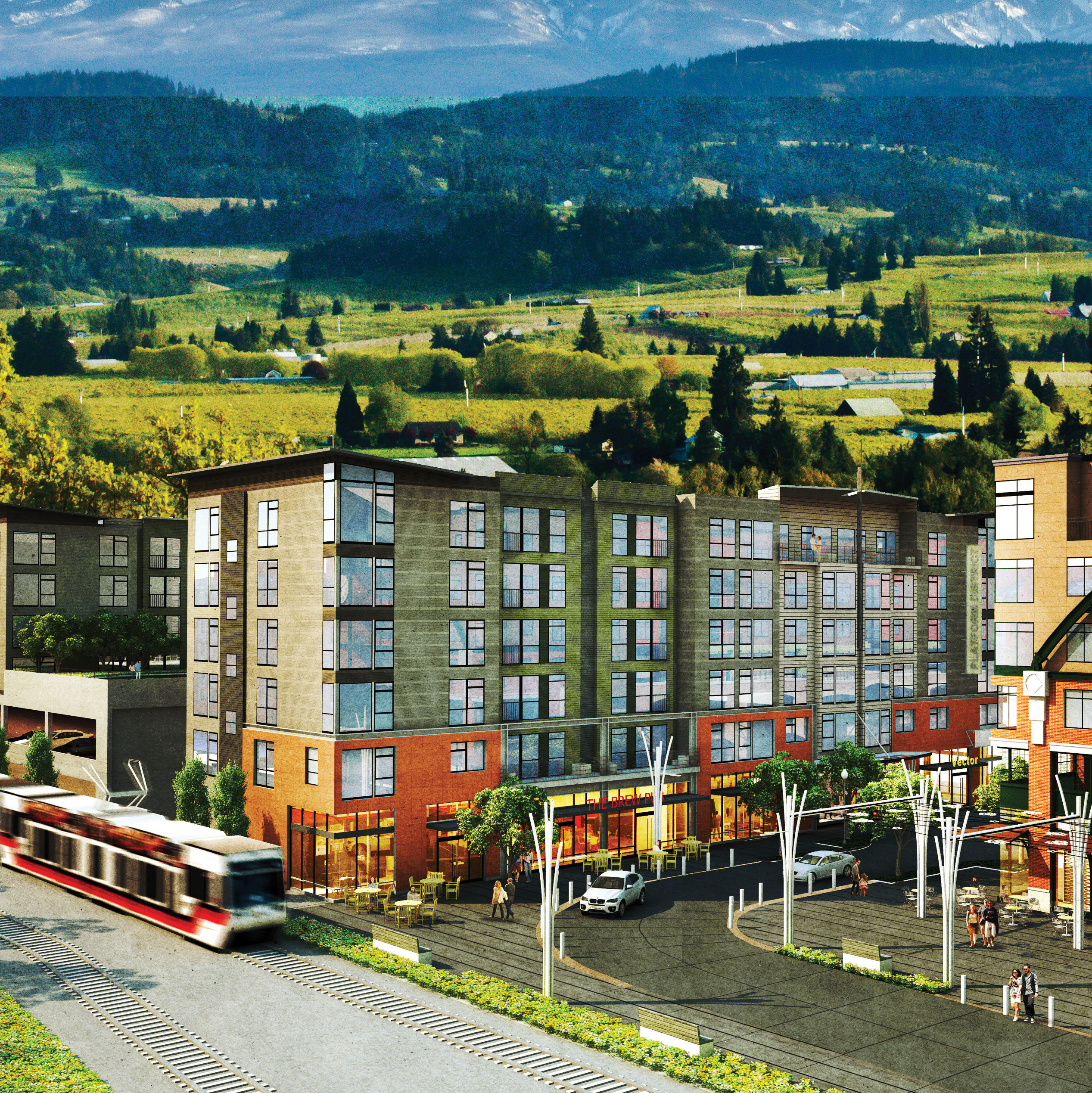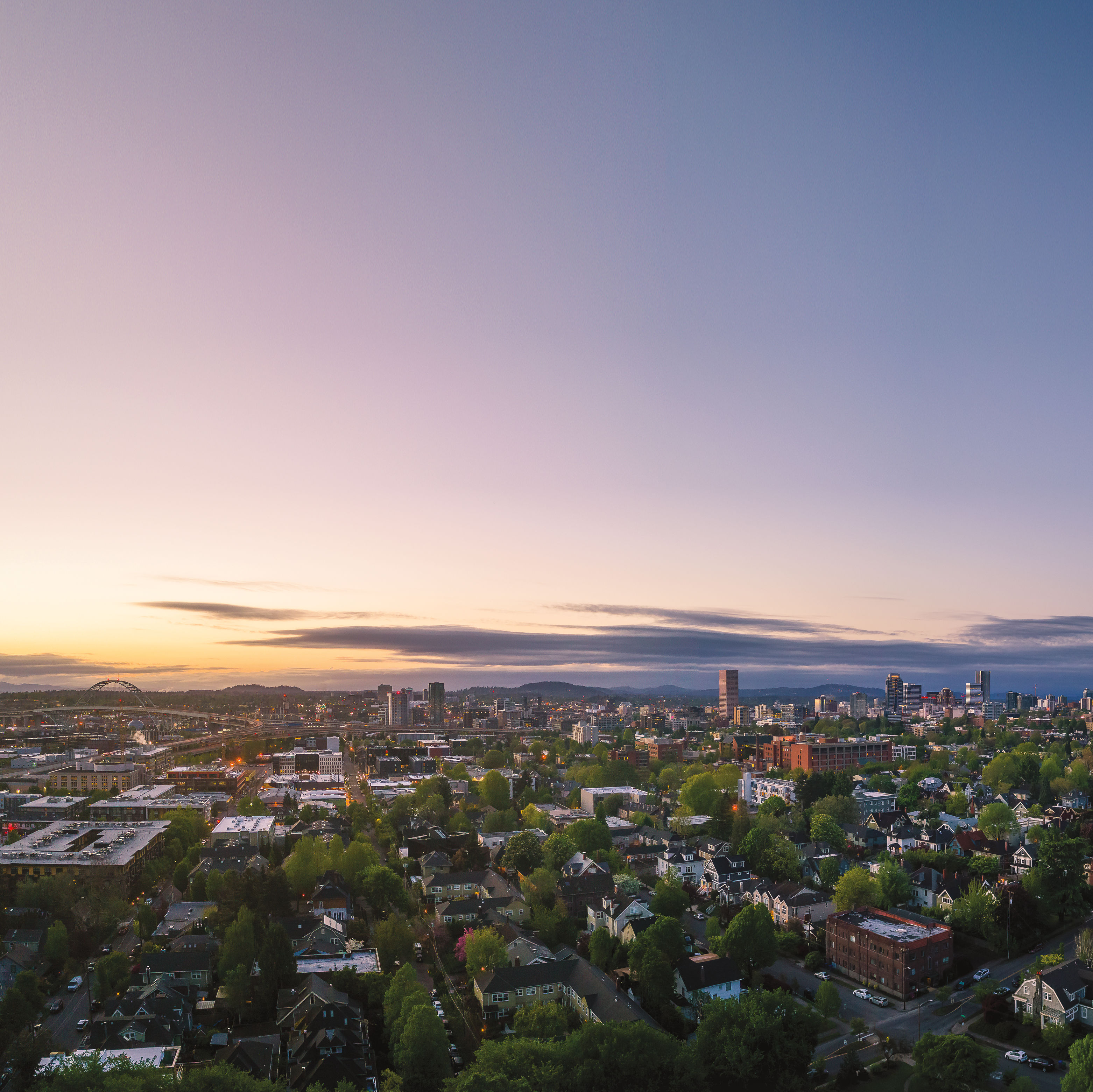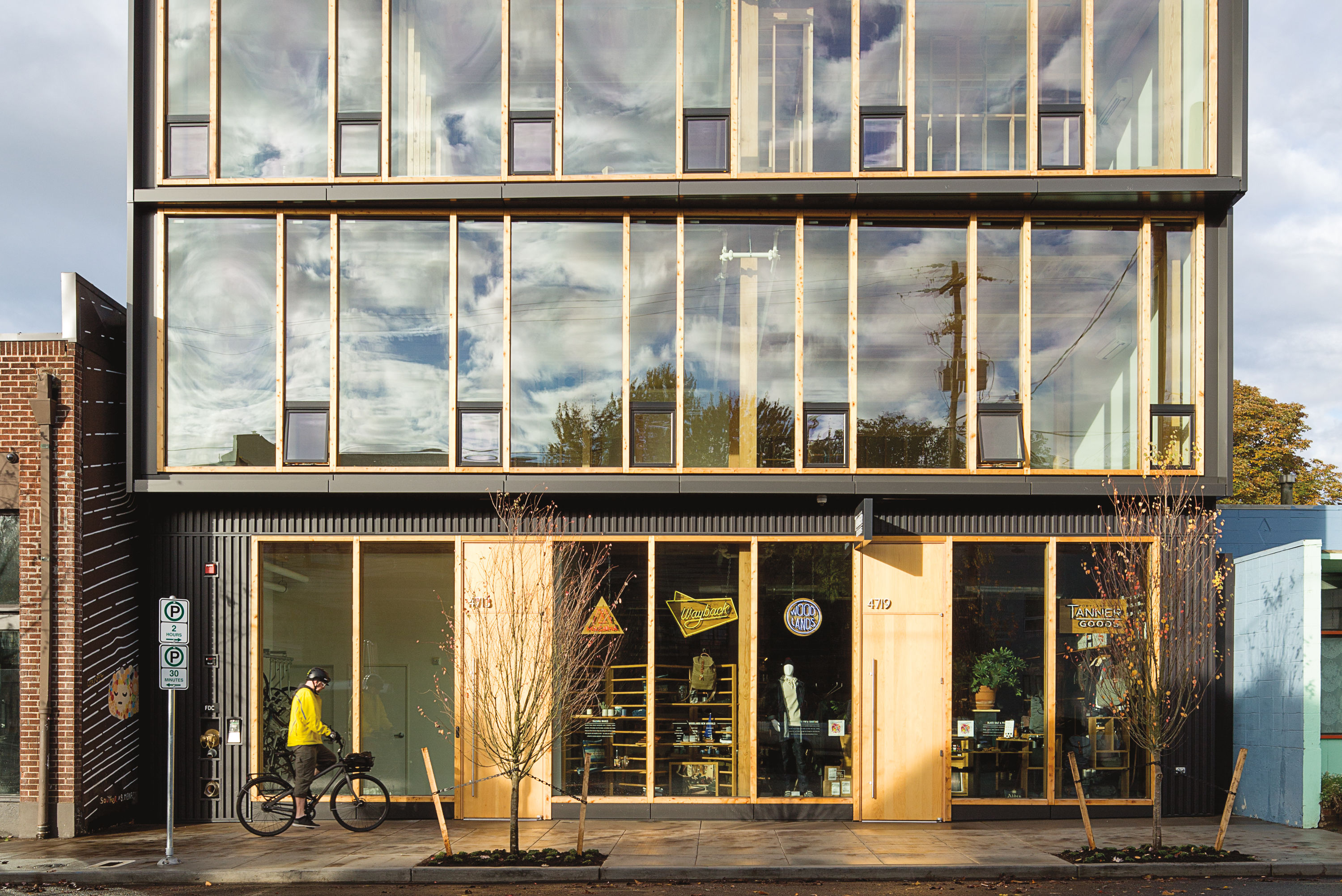This New Portland Condo Tower Is Both Sustainable and Seismically Strong
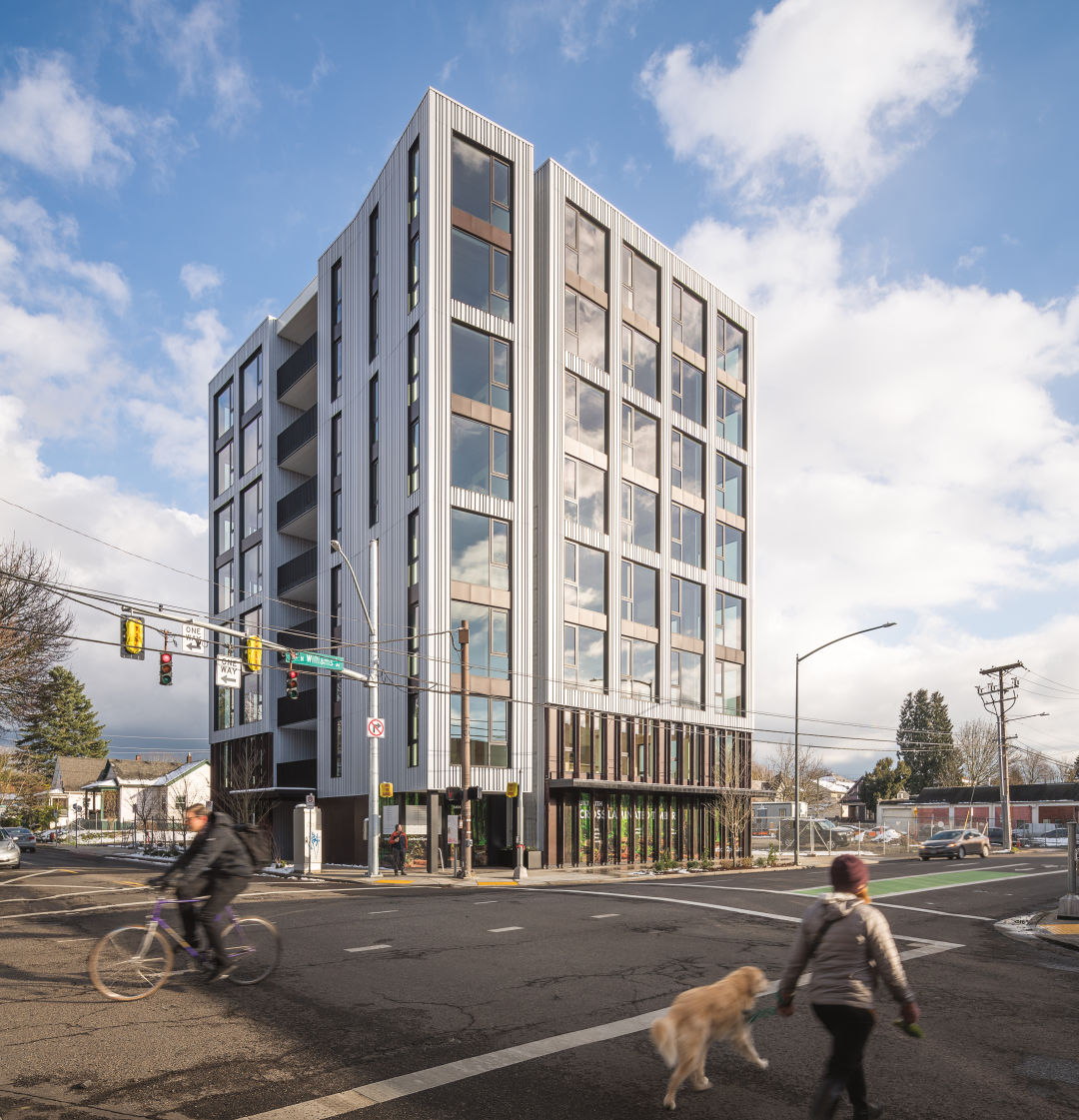
At the brand-new condo tower Carbon12, elevator doors glide open, and you step directly into an apartment’s mellow glow of blond surfaces and flooding light. This might be the only building in Oregon to offer that sleek feature; it’s pretty cool, but the distinctions don’t end there. Vast windows and generous decks overlook North Portland. Deep below the building, an automated garage/storage system keeps cars underground, delivering them to the surface on demand.
And with all that, the most interesting thing is still the wood.
“One calculation says that this building represents six minutes of growth in the Cascadian forests,” says Ben Kaiser, the 51-year-old developer behind these eight stories at N Williams and Fremont. “At any other time, it would have had to be concrete.”
Carbon12’s structural heart is a steel core. But just about everything else—the floors, the load-bearing columns—consists of cross-laminated timber, a hyperstrong material made by pressing and gluing together thin layers of wood. Long used in Europe and Canada, CLT is now getting a lot of attention from American designers, builders, and sustainability advocates. A small collection of CLT-based Portland buildings puts the city at the forefront of the microtrend; as it opens this spring, Carbon12 stands as the biggest finished project.
Obstacles abounded. Kaiser and his partners had to transcend building codes that limited wood buildings to 65 feet tall. The developer—inspired by a visit to the Bullitt Center, a Seattle building that’s essentially a green-building prototype—had to educate every player involved. “The investors. The bank. The contractors,” Kaiser recounts. “The sound separation and weatherization guys. No one had heard of CLT. Then again, not long ago, neither had I.”
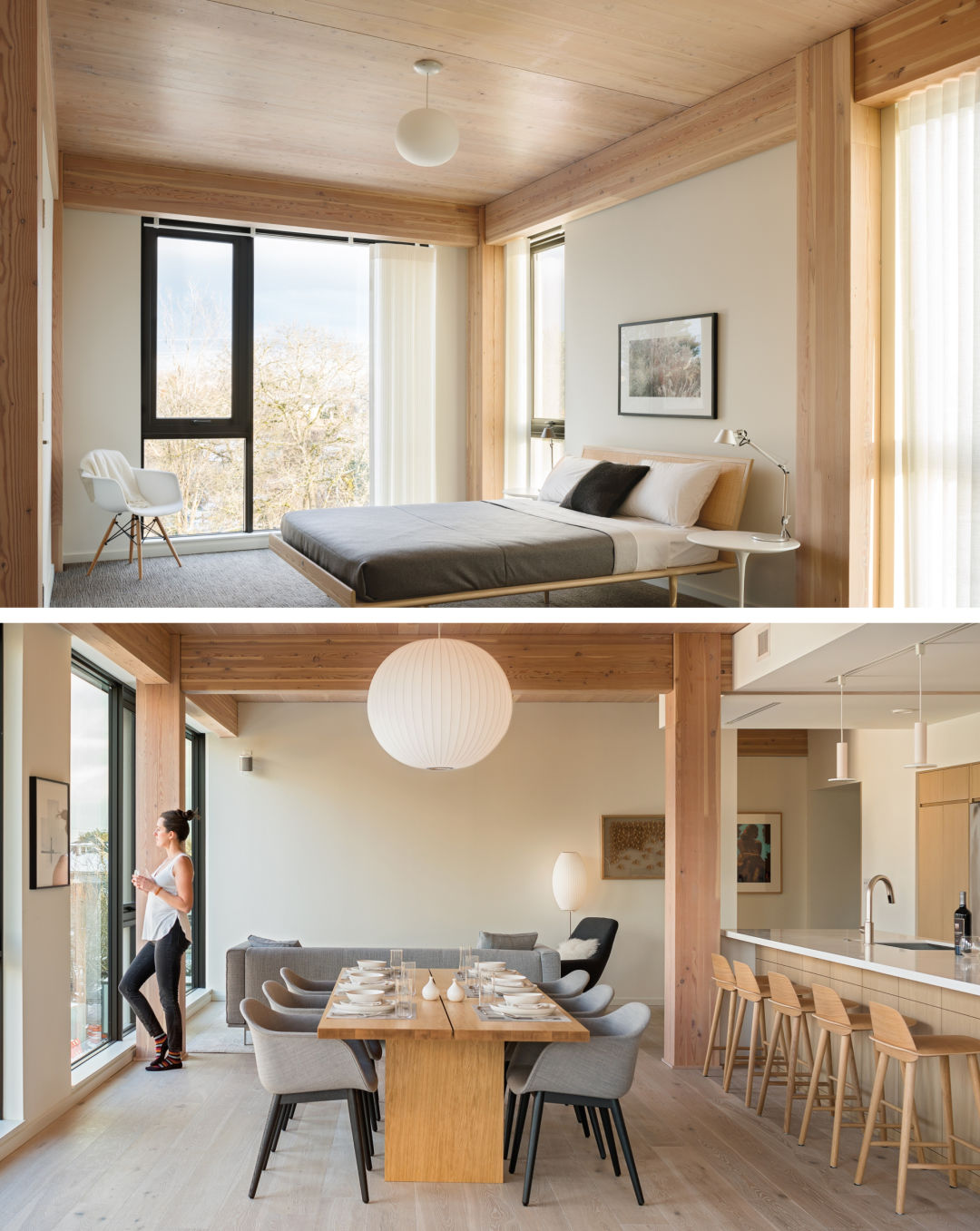
Once the case was made, however, the material offerred advantages. A British Columbia fabricator custom-cut each piece of the building with exacting accuracy, then shipped the whole thing to Portland on 14 flatbed trucks. “We just stood out there with a crane and clicked it all together,” Kaiser says. “We didn’t saw one thing.”
Innovation doesn’t come cheap: Carbon12’s 1,679-square-foot units start at $730,000 and list as high as $1.55 million. But Kaiser believes CLT will proliferate here, taking concrete’s place in buildings of different scales and aims. Seismic resilience could be one selling point. Carbon12 weighs 75 percent less than a comparable concrete structure, which might make a difference when the Cascadia Subduction Zone inevitably misbehaves. But to Carbon12’s developer, the strongest argument for this familiar-unfamiliar material is in the air.
“This is all about carbon sequestration,” Kaiser says. “Even five years ago, this building might have fallen on deaf ears, simply because climate change wasn’t as prominent an issue in the public mind. Now, it’s real. And this material is coming along right when we need it. It feels like we’re at a moment that’s akin to the introduction of concrete, and what that did for architecture and modern life in general. We’re rightly fascinated by that material. But we forgot that there can be better applications with wood.”
